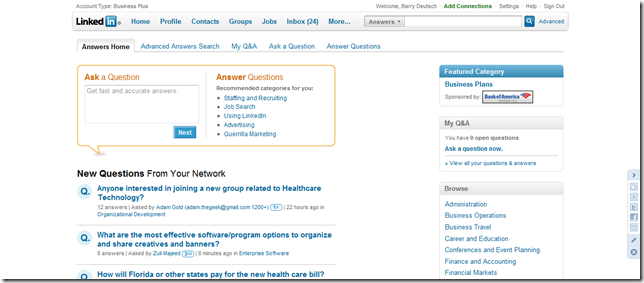Job Seekers and Warren Buffet
I am currently reading the book, “The Snowball: Warren Buffet and the Business of Life” by Alice Schroeder. It is an interesting biography on Warren Buffet’s life starting as a small child. Some of the more interesting parts highlight what influenced his thought processes about everything from money to how he treats people.
I haven’t finished the book yet, but as I was reading it two sentences stood out. To me, these two sentences explained exactly why so many candidates stay in a job search so much longer than need be. I have known this for a long time. The candidates I work with one-on-one in our job search coaching programs often start out the same way. I interview and speak with hundreds of candidates a month. It use to surprise me the number of people who acted this way. Not any more, I just accept it. I don’t understand it, but I do accept it.
When Warren was a teenager he read the book, “How to Make Friends and Influence People” by Dale Carnegie. Just about everyone has heard of this book. His biography addresses the impact this book had on him. How it “honed his natural wit, above all it enhanced his persuasiveness, his flair for salesmanship.” Obviously, this one book influenced him so much that decades later he still remembered it and gave it credit.
It was the two sentences before this which stood out and relates to the vast majority of candidates I encounter. Alice Schroeder writes, “Unlike most people who read Carnegie’s book and thought gee, that makes sense, then set the book aside and forgot about it, Warren worked at this project with unusual concentration; he kept coming back to these ideas and using them. Even when he failed and forgot and went for long stretches without applying himself to the system, he returned and resumed practicing in the end.”
This is what grabbed my attention. As soon as I read it, I thought this is exactly what most candidates do. This is exactly why so many candidates spend so many extra months searching for a new positions. They read a book, attend a webinar, read a blog article or listen to an audio file and think, “Gee, that makes sense, then set it aside and forget about it.”
Few, my guess less than 10% do as Warren did. Read the sentences again. Does anything stand out to you as it did me? What did Warren Buffet do different than all the others?
I see this constantly. People will return our job search workbook with a note, “Already know all this stuff.” At first I was stunned. When we wrote the book we spent an extensive amount of time identifying the mistakes candidates continually make. We then worked extremely hard to provide solutions to those mistakes. So it struck me as strange, that so many people knew all these mistakes, but just kept making them. How could this be?
I’m sure the many other excellent authors of books on this subject have experienced the same thing.
So I decided to test if it was true these people really did know all this stuff. I started doing some follow-up. I would call the person and ask for feedback. As I got bolder, I became more direct. I started asking very specific questions of those that “already know all this stuff?” For example, I would ask:
- Since you already know the only three things which can be measured during a phone interview, what do you do to properly prepare?
- As you know, there are only three types of questions asked in an interview. How do you identify which type of question is being asked and how do you prepare for each type of question?
- Of the ten most important questions to ask in an interview, which ones in your opinion were most helpful and of those which ones do you use most often?
- How long have you been using the cover letter we recommend and what has been your experience with this style?
- How often have you found yourself in anyone of the 5 positions in the Circle of Transition and how do you handle it? This could be really helpful to other candidates?
- How is your networking business card different from your interviewing business card?
It didn’t take long to discover these people may have read the book, but unlike Warren Buffet, they didn’t embrace the ideas with “unusual concentration.” Instead it was, “Gee I already know this stuff.” When in fact, from their answers, they had no idea what mistakes they were making and how the book provides solutions.
Warren Buffet read Dale Carnegie’s book over and over again. He referred back to it time and time again. He practiced regularly. When he failed it was back to the book. That is what made him unique. He didn’t just know it all, he implemented the concepts. He didn’t blame the book when things went wrong, he adjusted and tried again.
I know from the one-on-one job search coaching we do, when we get candidates to stop knowing everything and start doing things the right way, they find job leads that eventually lead to offers and employment.
Although it might appear as an attempt to sell our book it really isn’t. There are many great resources available to candidates. Many are 100% free. It is positively an attempt to get candidates to stop saying, “Gee, that makes sense, but I already know it.” It is positively an attempt to get candidates to learn from Warren Buffet. To get candidates to refer back time and time again to excellent resources. To re-read the books, re-listen to the audio recordings and to take this advice to heart with “unusual concentration” as Warren Buffet did.
I have discovered the reason there is so much written for job seekers is because job seekers need so much help. If candidates did everything so perfectly there wouldn’t be a need for all the books, blogs, articles and webinars.
The next time you read anything designed to help you in your job search don’t let your first thought be, “Gee, I already know that.” Rather force yourself instead to ask, “Good advice. How am I implementing that in my job search?” Attack it the same vigor and “unusual concentration” as Warren Buffet.
Try this approach first and you will find yourself gainfully employed a whole lot sooner.
OK, now this is a blatant attempt to sell you a book. You can get our job search workbook to review for free. Just pay the $5 shipping. For details on this offer CLICK HERE.
Test your job search effectiveness by downloading our free Job Search Plan Assessment Scorecard. Find the strengths and weaknesses in your job search. Then attack the weaknesses with “unusual concentration.” CLICK HERE to download.
For a FREE example of a cover letter that recruiters, HR and hiring authorities like and will get your resume read, CLICK HERE.
I welcome your comments, thoughts and feedback.
Brad Remillard









